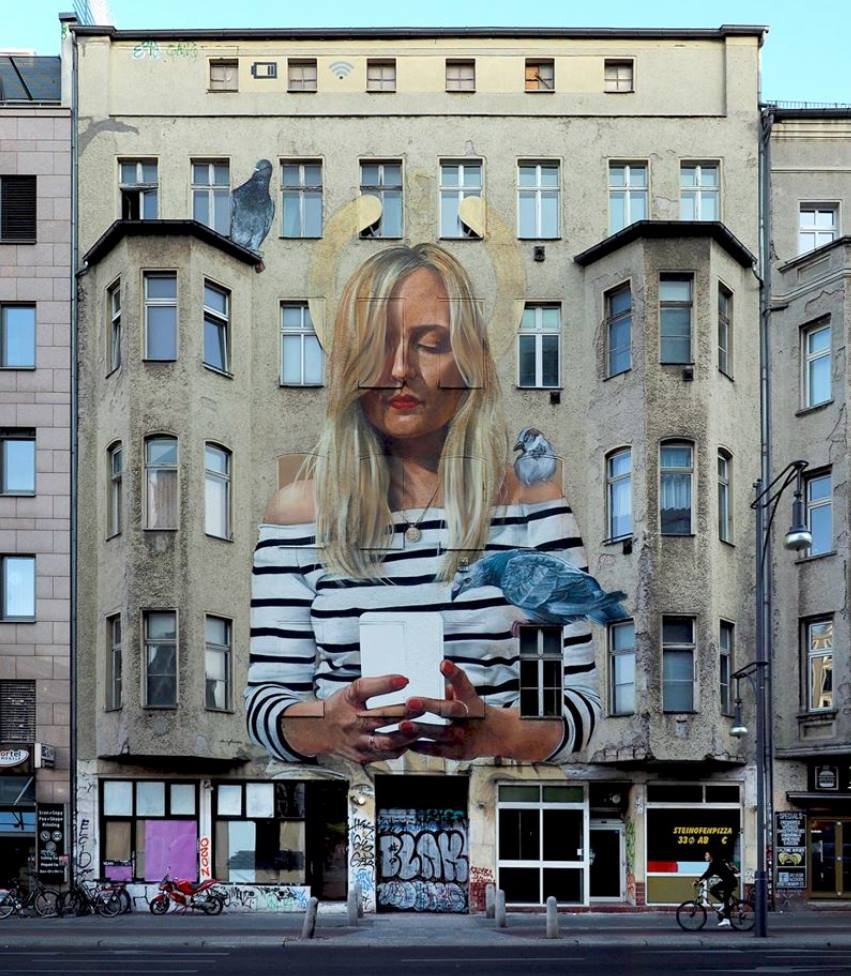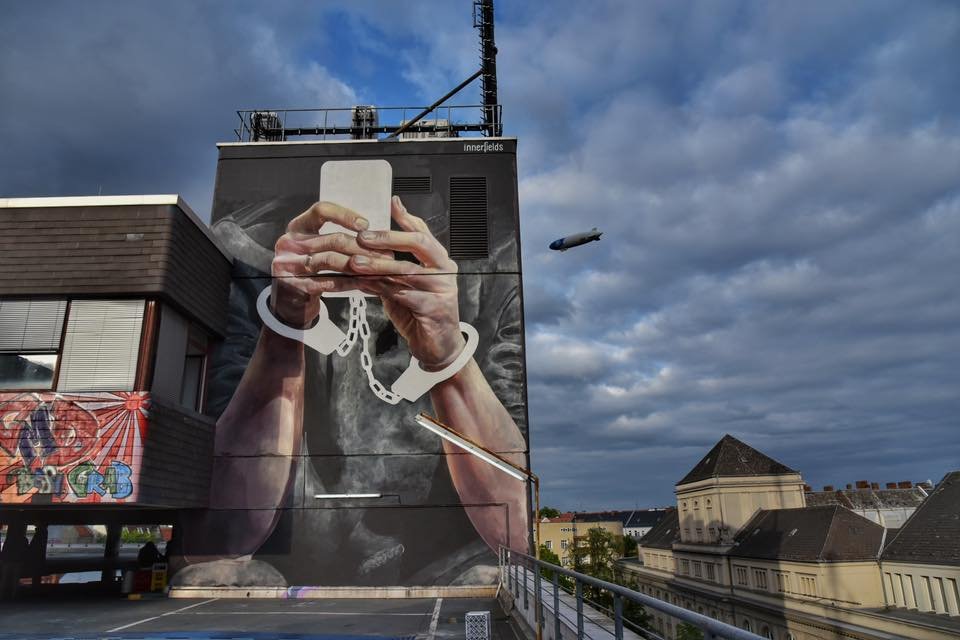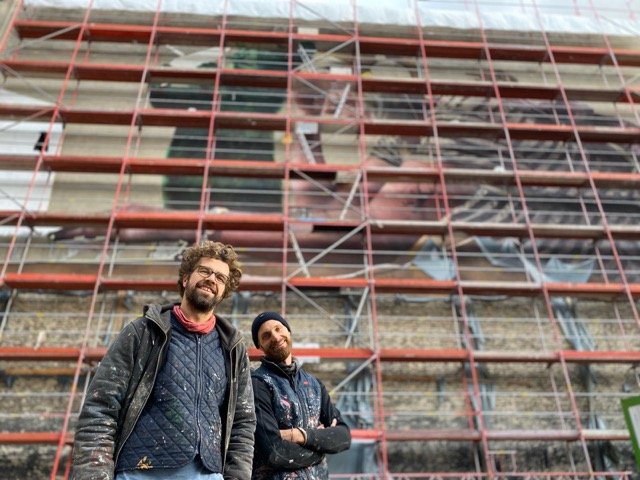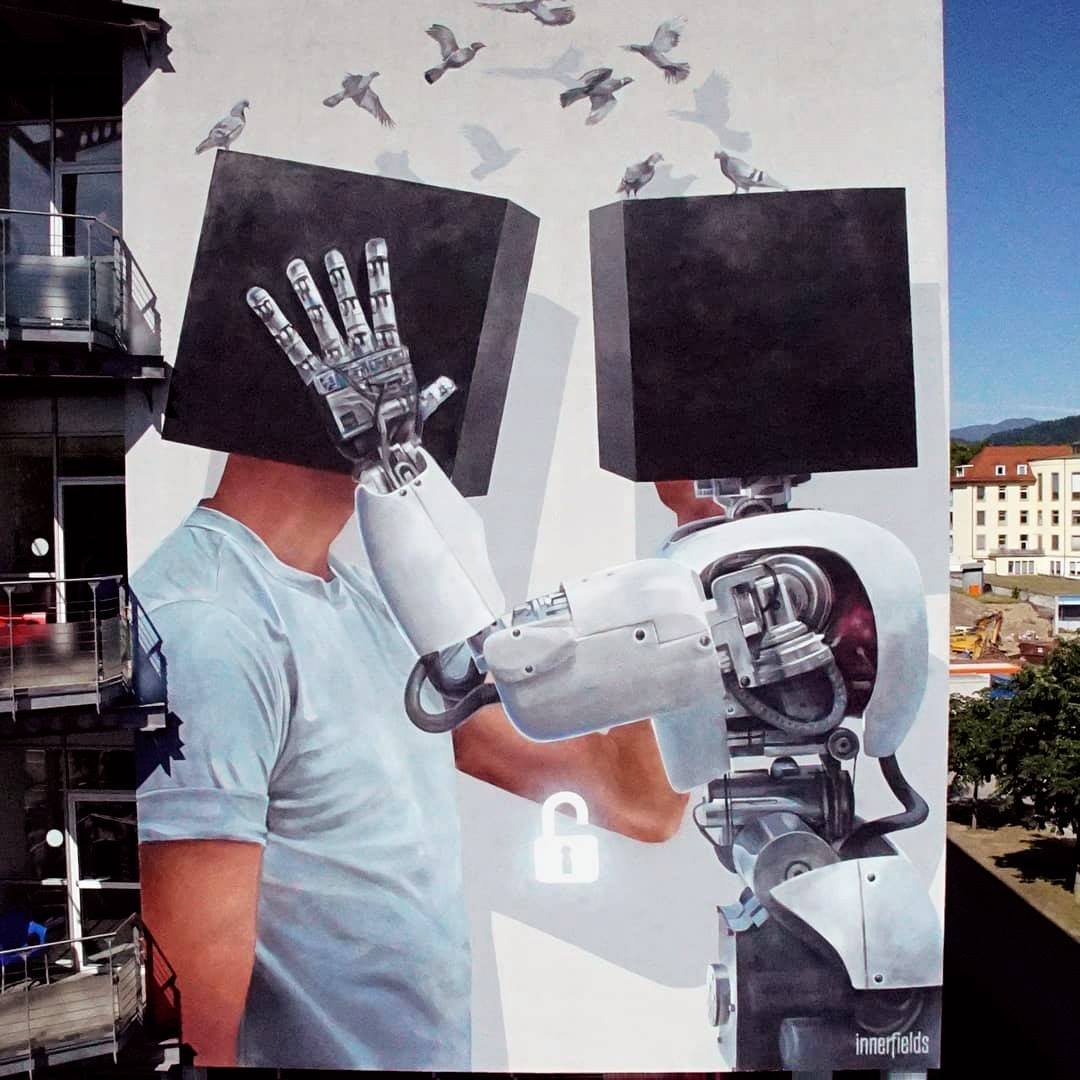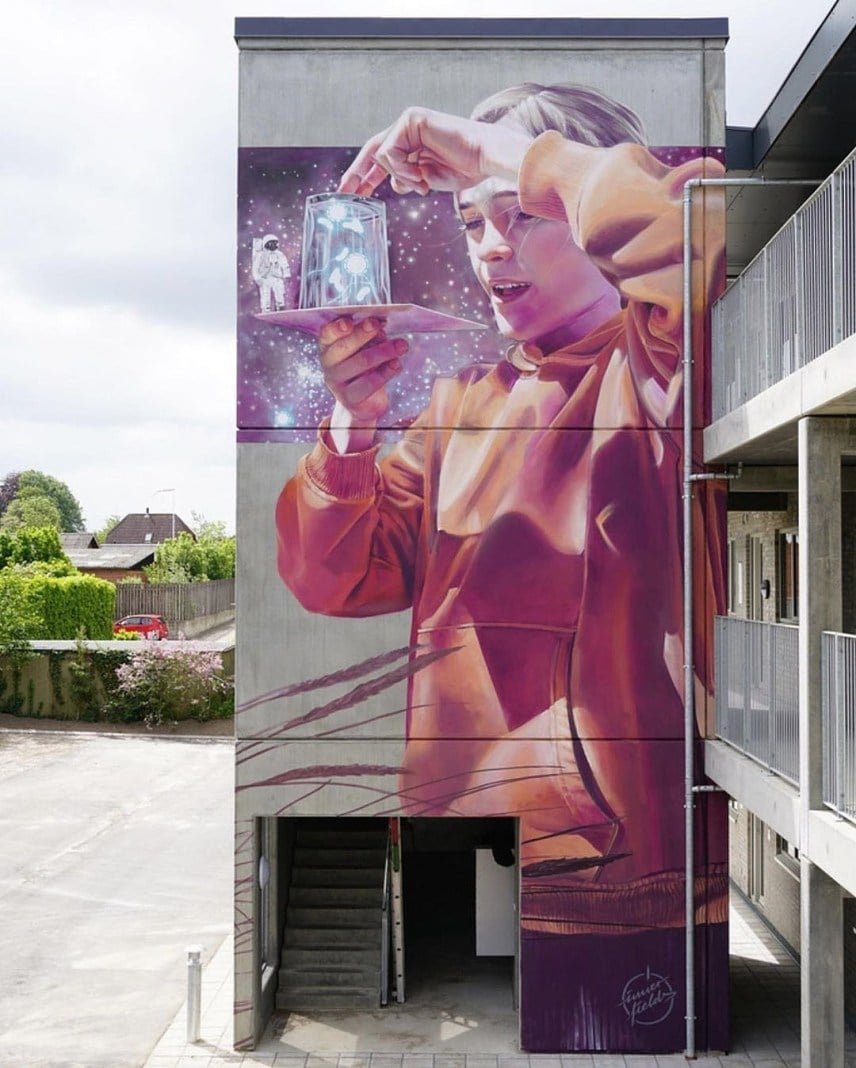INNERFIELDS
“Public art holds a unique proximity to people, making it perhaps the most accessible form of artistic expression. ”
Your work initially grabbed my attention due to its profound sociopolitical messages, particularly your exploration of the impact of the ongoing digital revolution. Was it always your intention to convey social awareness through your artistic endeavors?
Certainly, our initial graffiti pieces were simple expressions, featuring our names and crew monikers. However, as our artistic style evolved beyond mere tagging, we began incorporating narratives into our work. As our audience expanded and we gained recognition as artists, we not only discovered a genuine interest in our stories but also felt a growing social responsibility to leverage our art for raising awareness.
Interestingly, our creative portfolio includes pieces devoid of explicit messages, such as commercial projects undertaken for a livelihood. These endeavors are a means of sustaining ourselves, given the challenges of relying solely on art for income. Paradoxically, these commercial ventures often serve as inspiration for more thought-provoking and critical artwork.
How did the collaboration among your three artists, which has persisted since 1998, come about, and in what ways do you perceive your teamwork as a distinctive advantage in the art world?
Our paths first crossed in the streets while engaged in graffiti art. The distinct advantage we bring to the table is rooted in our rich diversity. Each team member possesses unique strengths, weaknesses, and perspectives. This multiplicity not only contributes to the richness of our collaborative efforts but also enhances our adaptability and innovation in navigating the dynamic landscape of the art world.
Considering the collaborative nature of your work, have you encountered any challenges as a team?
The most significant challenge has been, and at times continues to be, establishing a cohesive style that harmonizes our individual artistic approaches. Working closely together naturally brings about conflicts, akin to living in a large family filled with strong personalities. However, navigating these challenges has ultimately contributed to the evolution and resilience of our collaborative process.
As a significant contributor to the street art scene in Berlin, what are your reflections on the evolving landscape and the passionate trajectory that public art has taken over the years?
Public art holds a unique proximity to people, making it perhaps the most accessible form of artistic expression. Unlike a museum visit that requires purchasing a ticket, public art surrounds individuals, influencing them whether consciously acknowledged or not. It's only natural for us to witness the growing attention directed towards public art. What captivates us is the ongoing revelation that, despite the sense that everything has been said or done, there consistently emerges someone with a genuinely new perspective, revitalizing the artistic discourse.
How has your team's fearlessness in embracing creative experimentation and diverse mediums evolved over time and experience?
Certainly! Our fearless and open artistic attitude has grown organically with time and experience. There are instances when we have to adapt to the resources available in a given place, especially when working in new locations like other countries. The measurements and texture of the walls, the tools, and the available colors all vary. A notable example is the mural "Present" in Kiev as part of the "Art United Us" project. The colors we initially planned to use ended up being different due to the unavailability of specific hues. In these situations, improvisation becomes crucial. Working in other countries with distinct cultures requires the ability to adapt and improvise, as a simple "yes" might not carry the same meaning in every language and cultural context. This adaptability is a key aspect of our artistic journey.
Is the commitment to your mission of creating free public art sustained by your engagement in commercial projects, where a portion of the profits is dedicated to these community initiatives?
Undoubtedly, yes! Many compelling projects operate with minimal or no budget, and the support from those willing to pay for public art, such as house owners commissioning us to paint their facades, significantly contributes to the viability of our free public art endeavors. As we continue to expand, this aspect of our work remains integral, ensuring that the spirit of providing accessible and enriching art to the public persists.

